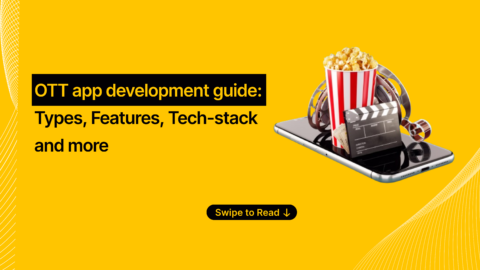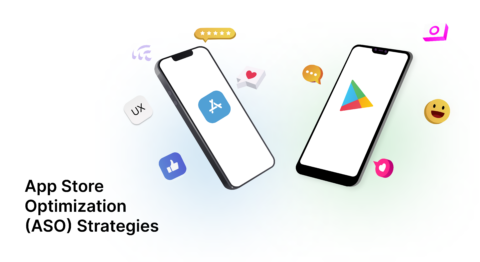React Native has quickly established itself as the most popular cross-platform mobile app development tool. As a result, the market for React has risen. You must first determine your criterion for selecting a database for your React Native creation. This will assist you in determining if the database you chose is the right match for you. If the database does not meet your requirements, you may change your mind.
The complexity of your data will determine which React Native app database you need. Other requirements, such as memory management capability, database maintenance policy, dispute handling policies, and the number of code lines, must also be considered. You have the choice of using a local database or a server-side database.
This blog focuses on the best databases for React Native app creation that will perfectly fit your company needs, such as having offline mode or increasing the scalability of your app.
5 Factors to Consider When Choosing the Right React Native Database
As previously said, there are several considerations to consider when selecting the best React Native Database for your project. Here are a few of the most significant factors to keep in mind:
1. Memory Handling Capacity
One of the most important things to look for when testing a React Native Database is how well it manages data. Your React software will fail more often if the database isn’t good at processing data. Most React Native Databases do this by clearing their cache regularly to ensure that they have enough memory to be available and that their apps run smoothly.
2. Ability to Manage Conflicts
Many smartphone applications necessitate cooperation-related functionality, which presents the challenge of increased data disputes in your app. Looking for React Native Databases that post their dispute management rules on their registry or website is a great way to tackle this problem.
Pro Tip: Read the literature for these databases to see how they handle syncing and clashes and the effect they may have on the React software.
3. Complexity of your App Data
Instead of choosing a database based on your current needs, I think it is always easier to provide a React Native Database that can accommodate all types of complex app architectures and codes. This enables you to create React applications that are modular and future-proof. If your budget doesn’t qualify for such a significant investment, you can still use one of the databases that fit your current needs.
4. Ability to Sync Offline Data
We have downtime and speed restrictions beyond a certain period, even with today’s ground-breaking internet speed and ease of access. You need your applications to run offline mode even though there is little or poor internet access if you care about your brand name. You’ll need a React Native Database that supports Offline Data Synchronization for this.
5. Ease of Use
Any React Native Database should be simple to set up and use, with minimal work required. What assurance do you have that the platform meant to make the data processing process easier would not cause you problems until it is set up?
5 Most Used React Native Databases
Now that we know what to look for let’s look at some of the most common React Native Databases on the market.
1. MongoDB
MongoDB is a server-side database that one created with dynamic applications in mind. Its simple approach is to store objects in JSON with stable schemas using a key-value store and relational database. This database is an excellent option for scalable React applications.
On the official MongoDB website, you will predict MongoDB pricing based on a specific cloud rollout. You should recruit dedicated React Native developers to learn more about MongoDB implementations if you don’t know anything about them. However, before you get started, consider the following advantages of using MongoDB for your React development:
MongoDB supports a wide range of data structures that one can conveniently model. MongoDB’s data format BSON is built on the JSON pattern, which allows you to include objects with multiple fields in a single collection.
MongoDB is based on the concept of a distributed database. It allows you to build real-time replicating clusters and share huge collections across several clusters for improved efficiency.
2. Realm
Realm database is a database engine for React applications that can handle a large volume of data. One built this database from the ground up to hire offshore developers to develop mobile applications with offline functionality. It also supports wearables and laptops in addition to smartphone applications.
For authentication, Realm uses different encryption methods for each app platform. You can open and edit synced and local systems and manage any Realm object server case with Realm Studio. You can browse files, link to your case, and view logs, among other essential tasks.
For those looking to introduce an offline-first architecture for React Native apps using the domain, Redux offline is a great option. It uses different security standards for each application platform.
3. Firebase
For React-Native creation, Firebase supports a real-time NoSQL database. It was chosen primarily for its ability to alter and synchronize data when offline. Also, it meets the MVC specifications for smartphone applications with ease.
You get the advantage of being a cross-platform API with minimal configuration specifications. It can also be downloaded from a handheld computer as if it were a real-time database.
Or used as part of an application, Firebase provides a cross-platform API that requires minimal configuration. You no longer need a dedicated server to view the data and you can do it directly from an app.
Or used as part of an application, Firebase provides a cross-platform API that requires minimal configuration. You no longer need a dedicated server to view the data and you can do it directly from an app.
4. SQ Lite
In React Native applications, using SQ Lite to store and preserve data locally is a popular approach. It provides a light-weight library that is built on a relational database that can be conveniently incorporated.
SQ Lite complies with the ACID norm. ACID stands for atomicity, consistency, separation, and longevity in its complete form. It’s a compilation of database properties designed to ensure data integrity in the event of power outages or event errors.
Developers can use a React Native SQ Lite storage plugin to handle app data and allow offline persistence with SQ Lite.
5. AWS DynamoDB
AWS DynamoDB is a server-side NoSQL database built specifically for the Amazon Web Service platform. Since it is totally decentralised, it does not require a lot of management. As a result, it is simple to use.
For the first 25 GB, DynamoDB will not charge you anything; after that, you will be charged according to the number of GBs used by the database.
DynamoDB does not have any servers on which to repair or handle any programme that it has to run or instal. It has the ability to auto-scale output in order to maximise efficiency. Its built-in fault tolerance eliminates the need to create applications in order to take advantage of scalability capabilities. This database will also include on-demand and provisioned storage modes, allowing users to specify power based on workload to save money.
With DynamoDB’s ACID transaction support, you can conveniently build business-focused applications. It encrypts the data by default and helps you to access and label all columns.
There are some other backend tools that software development firms can use to build their application by using these React native databases. However, the kind of project you’re working on will influence which database you use.
You can first make a list of your specifications before selecting the best database for your React Native app creation. Make no compromises when selecting a database, and it will save you a lot of money.
Talk To Experts
Get end-to-end web application development solutions for an unparalleled back-end and front-end experience. With our top-of-the-line technology expertise, We have been entitled to prestigious titles and awards as the best software development company that caters to industries and clients worldwide.










